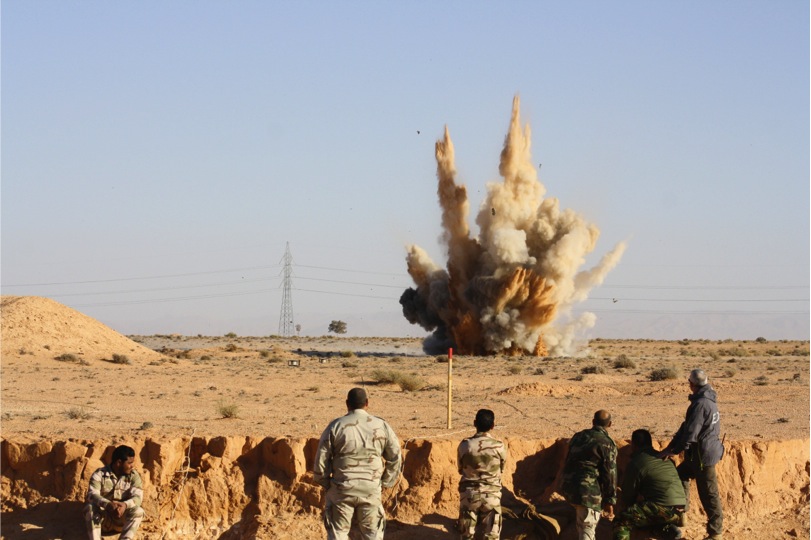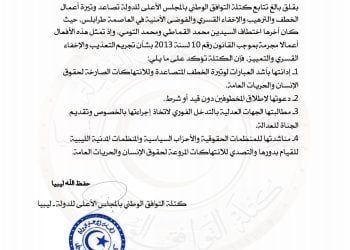By George Grant.

Tripoli, 9 December:
The first soldiers ever to be trained in explosive ordinance disposal inside Libya graduated today, at a . . .[restrict]high-profile ceremony held at the National Army’s Engineer Barracks in Tripoli.
Ten non-commissioned officers of the army’s corps of engineers are now qualified to conduct supervised demolitions of a range of munitions, including rockets, mines and grenades.
The soldiers may also be the first in the world outside of China to have received training on the Chinese Type 84 anti-tank mine, as Libya is the first country in which the mine has been encountered. It was a Type 84 that killed the Estonian de-mining expert Kaido Keerdo back in March. Keerdo was an employee of DCA Mine Action, the same group now training the Libyan soldiers.
To mark the significance of today’s landmark graduation, several dozen officers and other ranks had turned out to congratulate the soldiers together with representatives from the European Union, which provided funding for the programme.
Amongst those present were Brigadier General Mansour Abo Hjar, head of Libyan land forces; Colonel Jamal Shablik, commander of the Libyan Engineering School; Colonel Yusuf And Al-Jawad, member of the Libyan Armed Forces Defence General Staff; EU Defence Advisor Brigadier General Luigi Scollo; EU Deputy Head of Office Khaldoun Sinno; and UNSMIL representative Emad Abdulbaki.
“The students had an exceptional attitude; they were positive and eager to learn”, said Andy Stott, DCA Mine Action’s Operations Manager in Libya. “All of them were volunteers who showed a commitment to improving themselves”.
In a little under one month, from 11 November to 6 December, the men were inducted in a range of different subjects, including how to identify live and unfired ammunition, blast effects, high-explosives, incendiary devices, NATO and former USSR munitions colour coding, evacuation procedures and additional safety measures.
Although the students are presently trained only to level one, meaning they cannot conduct unsupervised detonations themselves, DCA Mine Action intends to bring them up to level two, which would enable them to dispose of single items of munitions up to 84mm in size.
None of the ten students had previously had any exposure to explosive ordinance disposal, but several now wish to make it the focus of their military careers.
“I volunteered to do this for the sake of Libya, and now I want to make it my speciality”, said Ali Mustafa, one of the soldiers. “It was an excellent course; the instructors were really experienced and knew what they were talking about.”
Certainly, Libya will need more men like Mustafa if it is ever to rid itself of its unexploded ordinance (UXO) problem. Although no exact figure exists for the number of mines still in Libya, it is reckoned the number runs into the millions. From Tobruk to Benghazi and across the Gulf of Sirte, the coast is littered with mines and other UXO left over not just from last year’s revolution, but also the Second World War.
Minefields are also located down the western border from Tunisia to the south, whilst former regime forces are believed to have added further to the problem by laying large quantities of new mines in the Nafusa Mountains during the 2011 uprising.
Several de-mining groups are working in Libya at present in addition to DCA Mine Action. One of the biggest is Handicap International, which had searched more than 21 million square metres of land by the end of last month and removed in excess of 35,000 items of UXO from the Sirte Basin.
On 15 November, the group detonated over nine tons of UXO, some 5,500 individual items, in three bulk demolitions outside Misrata. [/restrict]









